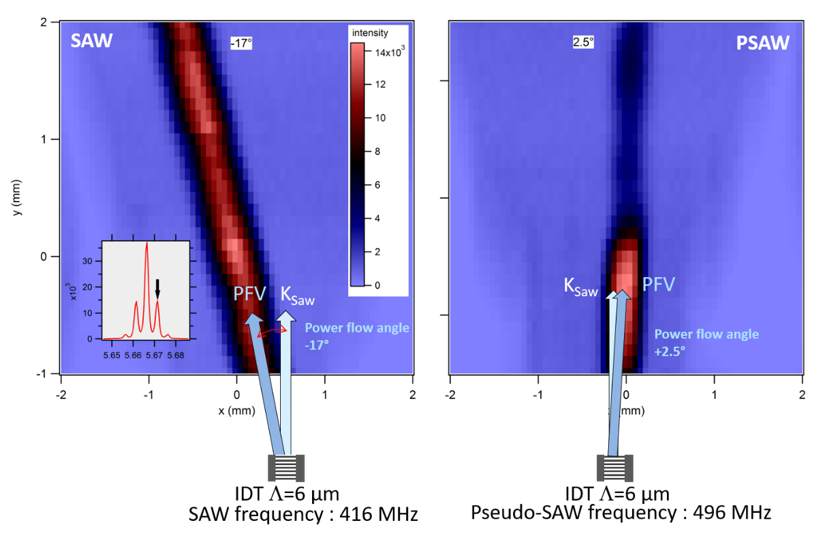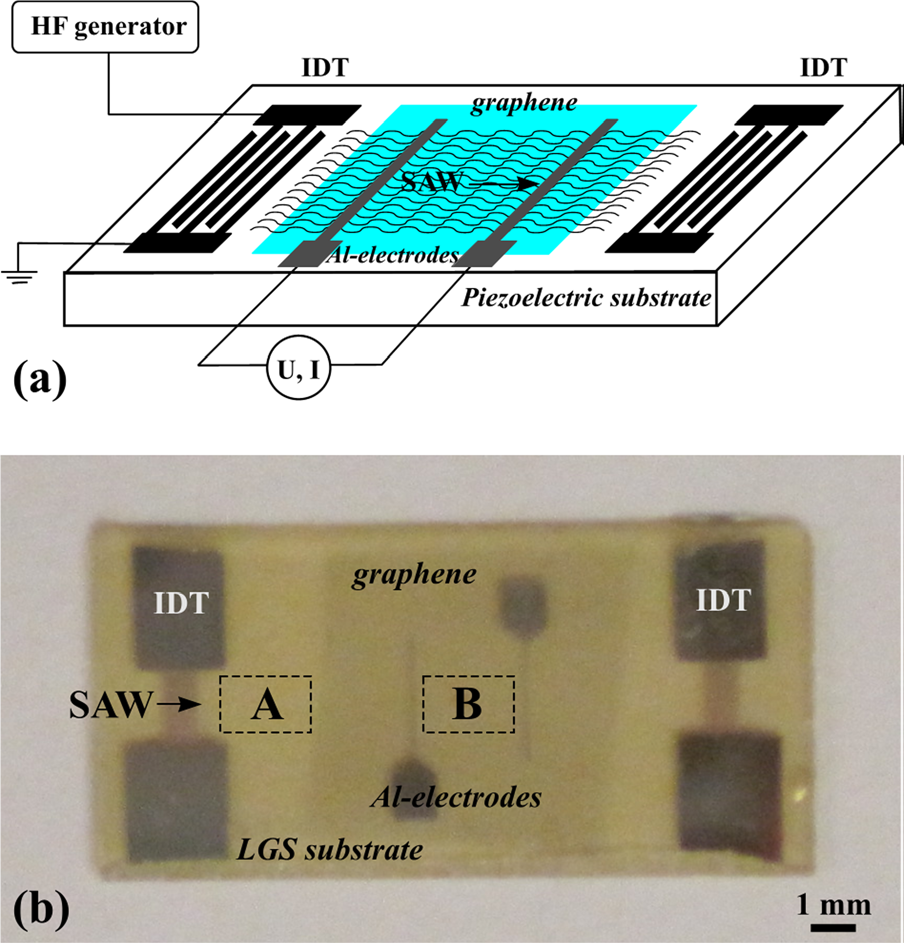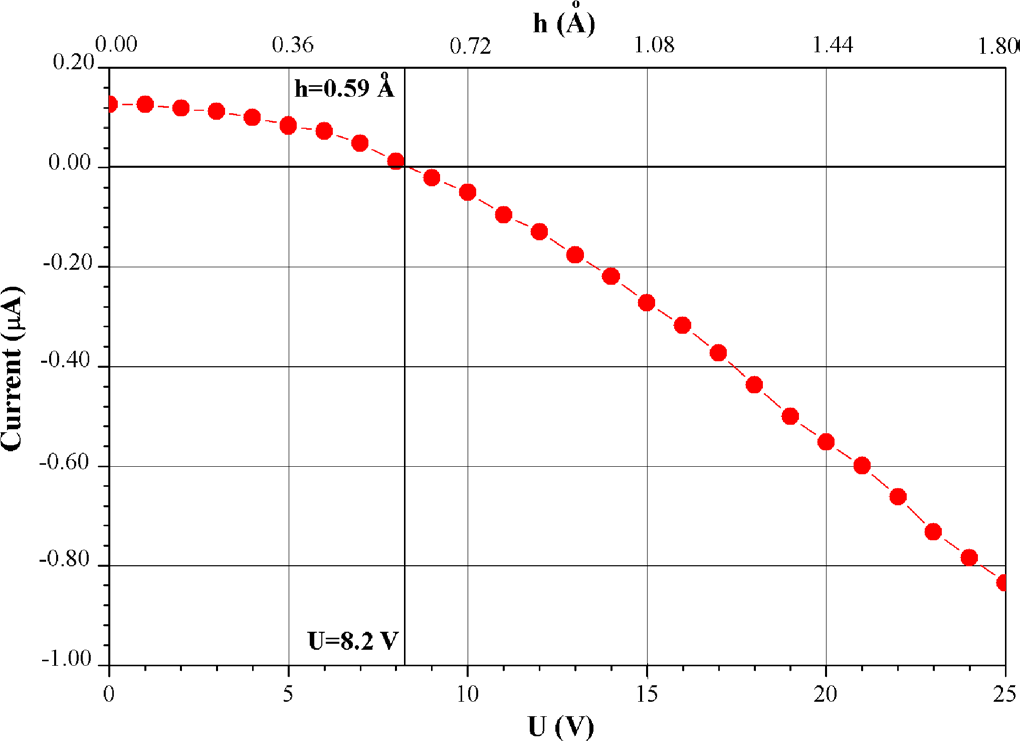Contact: Luc ORTEGA
X-ray diffraction study of surface acoustic wave propagation
The study by X-ray diffraction of the propagation of surface acoustic waves (SAW) in materials is an original method allowing to visualize and measure the characteristic parameters of the propagation such as the amplitude of the wave, the power flow angle or its attenuation. X-rays are sensitive to distortions of the crystal lattice and to electronic density change. We typically study piezoelectric crystals such as compounds of the langasite family La3Ga5SiO14, lithium niobate LiNbO3 or lithium tantalate LiTaO3. Interdigital transducers (IDT) are deposited onto these crystals of centimetric size which allow to excite the crystals.


Around a diffraction or reflection spot, we observe satellite peaks whose positions and intensities provide information on the acoustic wave generated. These studies are performed under synchrotron radiation beam (Bessy, Soleil) but can also be done in a less optimized way in the laboratory. The dynamics of these devices are studied for example to realize fast X-ray shutters.


Reference: Roshchupkin, D, Ortega, L, Plotitcyna, O, Zizak, I, Vadilonga, S, Irzhak, D, and Emelin, E 2021 X-ray diffraction by surface acoustic waves. Journal of Applied Crystallography, 54(1): 180–194.
Study of pseudo surface waves
Using our X-ray probe we are interested in exotic acoustic wave propagations such as pseudo surface waves (PSAW). SAW and PSAW have the same wavelength but different velocities and, therefore, are excited at different frequencies. It is shown that the power flux angles are very different as well as the wave propagation.

Reference : Dmitry Roshchupkin, Luc Ortega, Olga Plotitcyna, Alexei Erko, Ivo Zizak, and Dmitry Irzhak, 2013, X-ray diffraction study of surface acoustic waves and pseudo-surface acoustic waves propagation in La3Ga5.5Ta0.5O14 crystal, Journal of Applied Physics 113, 144909.
Study of physical systems deposited onto a surface acoustic wave device
Another research axis is to study the acousto-stimulated transport of charge carriers in a graphene film. We are working to extend these studies to other types of systems: photovoltaic or charge density wave compounds on which the LUTECE group is working.


Reference: Dmitry Roshchupkin, Luc Ortega et al., 2015 Surface acoustic wave propagation in graphene film, Journal of Applied Physics 118, 104901